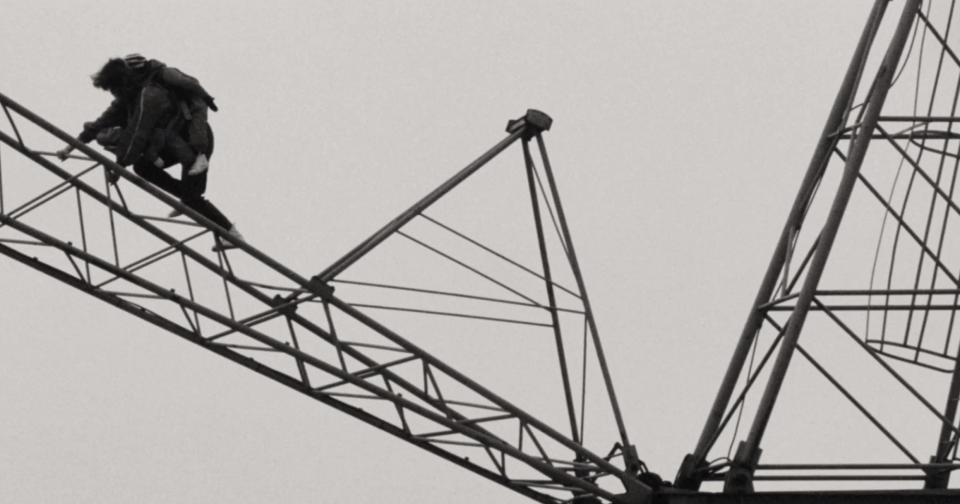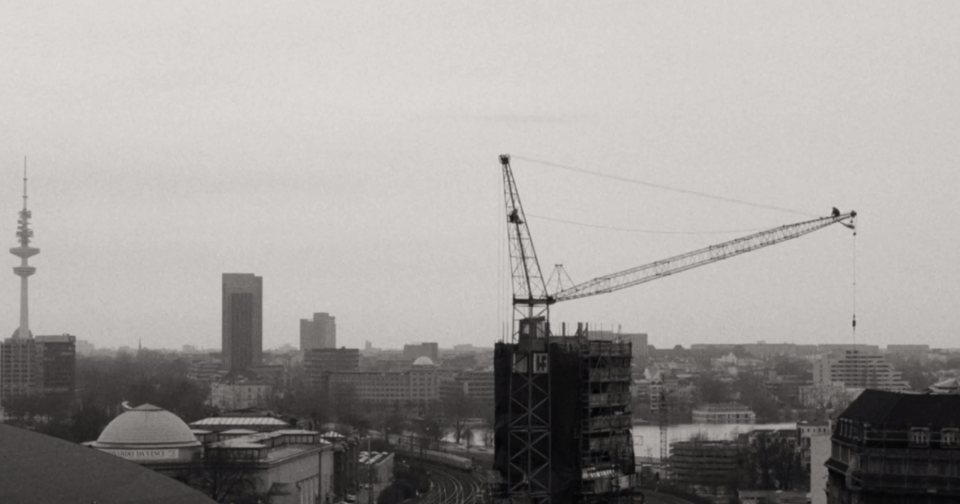Maastunnel North and South
Helke Sander, Jelena Novak
28. – 30.03.2025
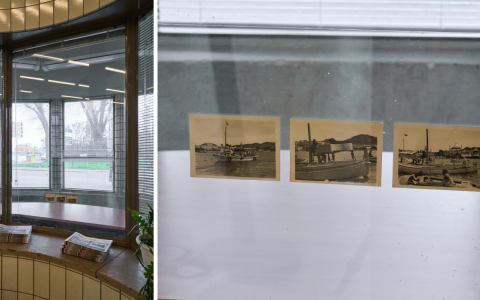

Jelena Novak, Photo Songs, 1972–2025. Photo: Philip Graysc
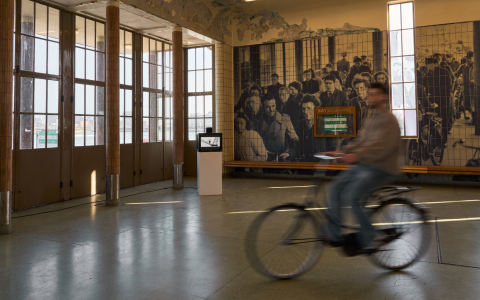

Helke Sander, From the Reports of Security Guards & Patrol Services Part 1, 1985. Photo: Philip Graysc
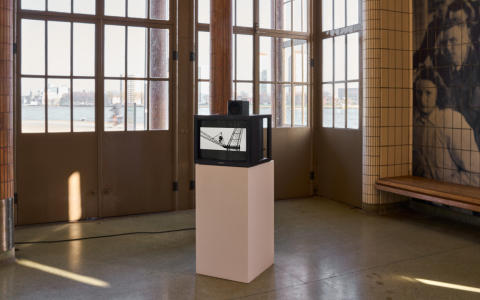

Helke Sander, From the Reports of Security Guards & Patrol Services Part 1, 1985. Photo: Philip Graysc
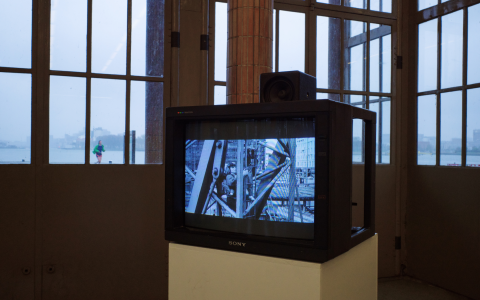

Helke Sander, From the Reports of Security Guards & Patrol Services Part 1, 1985. Photo: Job Willems
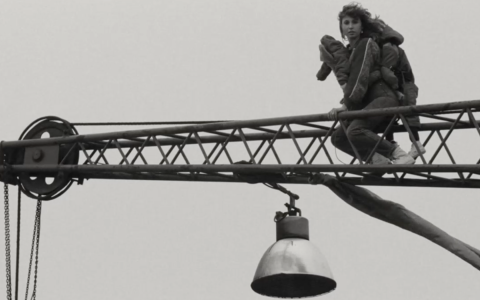

Helke Sander, From the Reports of Security Guards & Patrol Services Part 1 (still), 1985.
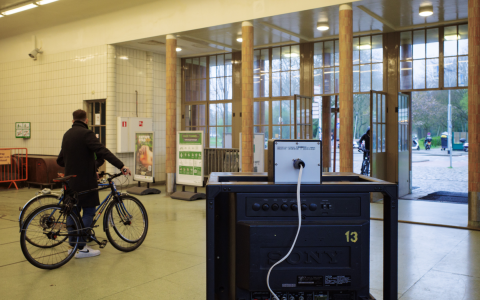

Exhibition view Maastunnel North Side. Photo: Job Willems
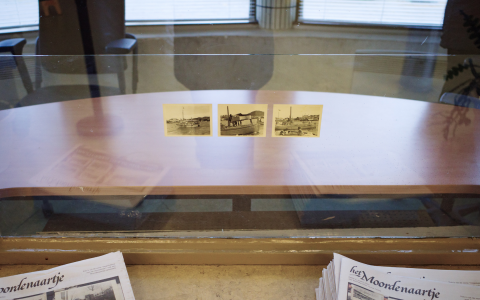

Jelena Novak, Photo Songs, 1972–2025. Photo: Job Willems
Two artworks were on display at the Maastunnel: one on the north side and one on the south side.
On the north side, Helke Sander’s film From the Reports of Security Guards & Patrol Services Part 1 (1985) was shown in a loop. Passersby could watch the film just before entering the tunnel to the South—or simply walk past it.
This eleven-minute film depicts a woman risking her own life and that of her two children by climbing to the top of a crane. She threatens to jump if she is not assigned affordable housing that same evening. The scenario is based on a true story.
The film, which won the Golden Bear for Best Short Film at the 1985 Berlin International Film Festival, expresses a clear vision of the relationship between crisis and resistance, while also casting a sharp light on the ongoing housing crisis and the slow but steady gentrification unfolding in Charlois.
This film is part of a series, which also includes From the Reports of Security Guards & Patrol Services Part 5 (1987) and Part 8 (1986).
On the south side of the Maas tunnel, on the front window of the security guard booth, visitors found three small black-and-white photographs by Jelena Novak, titled Photo Songs (1972–2025). These photos, from the artist's family archive, capture unknown musical performances. In two of them, a piano is securely tied with ropes to the bow of a wooden boat. In the third, small choir of girls sings while sailing on another boat, also in the bay of Vela Luka, on the island of Korčula – then part of Yugoslavia. The photographs were likely taken in 1972 and radiate joy in creating unconventional music. A small, utopian art festival – the International Artists' Meetings – took place in Vela Luka during three consecutive summers: 1968, 1970, and 1972. It encouraged local participation in artistic processes, but afterward, there was no reflection or attention (Darko Fritz, Heritage of the 20th Century, 2025). Over time, the photos have aged, but the choreography of bodies, voices, sails, and sound continues to express a feeling of real energy.
Another work by Jelena Novak was present at Stichting Historisch Charlois.
Helke Sander‘s artistic work is inseparable from her political feminist commitment. In 1973, she founded the 1st International Women‘s Film Seminar – the first German festival for films made by women. In 1974, she founded the feminist magazine Frauen und Film. She became known internationally in 1992 with BeFreier und Befreite. Since 1981, Helke Sander has been professor at the Hamburg University of Fine Arts. In 1985, she was elected to the Berlin Academy of the Arts, from which she resigned in 1989 because of hostility to women and sleaze.
Jelena Novak is a researcher, lecturer, writer, dramaturg, music critic, editor and curator, working around recent opera, singing and new media, capitalist realism, voice studies and feminine identities in music. Exploring those fields, she focuses on bringing together critical theory and contemporary art. Her most recent books are Postopera: Reinventing the Voice-Body (2015), Operofilia (2018) and Einstein on the Beach: Opera beyond Drama (co-edited with John Richardson, 2019). Recently she collaborated as a dramaturge at the opera in seventeen songs songs Deca (Children) (2022) by Irena Popović at the National Theatre in Belgrade. Currently she works on a book Opera in the Expanded Field and researches about what it means and what it takes to sing beyond human.



